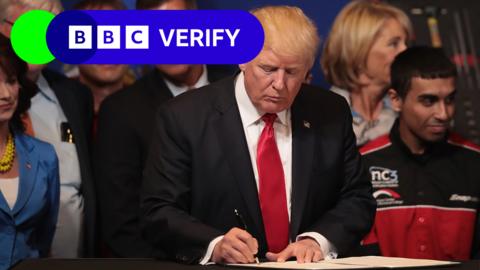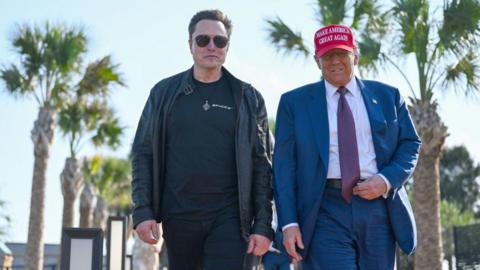An immigration row has erupted between Donald Trump's supporters over a long-standing US visa programme.
The feud is about H-1B visas, which allow US-based companies to bring in skilled workers from abroad into certain industries.
Critics say the scheme undercuts American workers - but proponents say the visas allow the US to attract the best expertise from around the world.
The president-elect has weighed in, saying he supports the programme - despite being critical of it in the past - and tech billionaire Elon Musk has also defended it, saying it attracts the "top ~0.1% of engineering talent".
Here's what the data tell us about who gets into the US on these visas.

